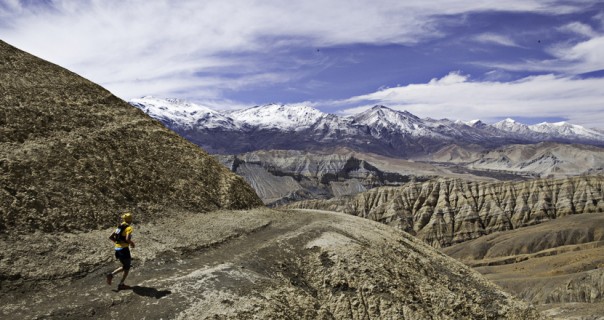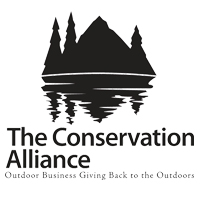Getting Your Feet to the Starting Line of the Badwater Ultramarathon
(Badwater finishers) of ZombieRunner.com (“Stuff For People Who Run”)
Download this article as PDF – Reprint in your running club newsletter!
Read their 2007 follow-up article, based on their 2006 race experience.
When I worked on feet at the Western States 100 Mile Endurance Run, I became very aware of how badly runners had treated their feet BEFORE the run. The damage I saw wasn’t a result of running the race through rugged canyons, it was typically the result of months of foot abuse, that then turned into a debilitating injury on race day. For example, a common problem is thick callus build-up on the ball of the foot. Under extreme conditions of technical trails, heat, and dehydration or electrolyte imbalance, the skin can easily become separated from the bottom of the foot, with large blisters forming under the callus. Treatment on the spot is practically impossible for this type of injury. Blisters can’t be drained through calluses, so the best that can be done is to tape over the foot to basically hold the skin on. It’s a painful way to finish, and even more painful if you can’t finish. While extreme endurance events, such as the Kiehl’s 2006 Badwater Ultramarathon, are tough, it’s the training that can really beat you up. And one body part that particularly suffers is your feet. Runners do all kinds of great things in training, focusing on distance, hills, speed, nutrition, but often forget their feet. By the time you reach the starting line, it’s too late to fix the mistakes you made in training. But if you spend some time taking care of your feet before the event, it can make a huge difference between finishing feeling good and a DNF.
Here are some key focus areas of foot care during training.
Finding the Right Shoes (and Socks)
Poor shoe fit is the number one cause of blisters. Work on this well in advance of your event. Shoes need to have a roomy toebox, arches that line up with your arches and are not intrusive or cause pressure points, heels that fit securely and don’t rub, and laces that you can tie without them digging into your feet. Also check for the collar of the shoe hitting against your ankle bone. Small problems with fit will be magnified in endurance events. The heat will make your feet swell, so you’ll want to start in shoes that are slightly large. You may want an extra pair that’s even larger. Many Badwater entrants have extra shoes that are one or even two sizes bigger in their support van. The other entrants usually wish they’d done the same. An important part of wearing oversized shoes is that you use an insole that matches your feet. Going up a shoe size changes the alignment of the shoe with your arch, and can cause blister problems. Check for any rough patches in your shoes or insoles. One product you can use to fix this is Engo patches. They adhere to your shoe to reduce friction by covering up rough or lumpy spots.
Test the shoes for the distance and race surface. If you use after-market or custom insoles, make sure the combination works well together. In addition, you must find the right socks. For Badwater, you need materials with the best wicking capabilities possible. Your feet will sweat, so anything you can do to reduce moisture will help. Avoid cotton socks. Although some runners like wool, it’s a poor choice for these conditions. Socks made of synthetic fabrics tend to have more technical features built into them. Many Badwater runners use Injinji five-toe performance socks because they are comfortable and practically eliminate the chafing between toes that causes blisters. They allow your toes to work with the rest of your feet, like the difference between mittens and gloves for your hands.
Getting Rid of Calluses
As you keep pounding pavement over weeks and months of training, your feet naturally toughen up. Places that originally got blisters will no longer get them, and the skin will get rough. While the general effect is good, there is a component of this that is not so goodcalluses. Callused skin is too rough and should be removed. Calluses in the heat can separate from your foot and blister underneath or even come off completely, leaving the foot raw underneath. The ball of the foot, heel, and toes, especially small toes, are all problem areas. For small toes, calluses can get so bad that the skin of the whole toe comes right off! Taking care of this problem requires perseverance, but the work will pay off. First, on dry feet, use a pumice stone or a callus reducer (kind of like a rasp) to file down the rough skin. This should be done in stagesdo it too aggressively and your skin will be raw. Afterwards, moisturize the foot with a heavy duty cream. The Badwater title sponsor, Kiehl’s, makes an excellent product for this purpose, called Klaus Heidegger’s All-Sport Foot Cream. Apply the cream after you take a shower also. Work on getting rid of calluses every day that are already built up, then once a week to maintain your foot health. You can apply lotion as often as you like.
Trimming and Filing Toenails
Another mistake runners make is letting their toenails get too long. Use a toenail clipper regularly to keep the nails trimmed, and also use a nail file to keep the edges smooth. This will help avoid black toenails and blisters under nails, which can be caused by a shoe that’s too small in the toebox, toes that keep bumping against the end of the shoe, or toenails that catch on the top of the toebox. Toenails should be cut straight across to avoid irregular growth, such as ingrown toenails.
If you have previously lost toenails and new ones are growing back, or you have black toenails that are bumpy and ugly, you can fix them up by filing across the top of the nail. Do this when the nails are dry (not after a shower or bath). Your goal is to gradually file down the layers of the nail, so that it’s not raised up against your shoe. File the nail before your shower, and then after the shower you can apply tea tree oil. This helps keeps the nail healthy.
Learning Your Taping Techniques
Many runners never need to tape their feet for regular distance runs, or even for 100 milers. But Badwater is different. The heat of the road for 135 miles means you need more protection for your feet. For most people, it’s tough to simulate race conditions to test various tapes and techniques. But you can still get a good idea of how a tape holds up just by wearing it for a short run and throughout a normal work day. A key feature of any tape used for Badwater is that it must be breathable. Duct tape is an absolute no-no. Some tapes to consider are Elastikon, Medipore, and Kinesio. All three are stretchable, breathable and durable. They stick well, but in extreme heat will need an adherent to make sure they really hold. Tincture of benzoin comes in bottles and easy-to-apply swabs. Protective taping can be applied in a single layer over potential problem areas. Runners may want to tape the entire foot, covering the heel, all the way through the mid-foot to the ball of the foot. Wider width tapes work best for this, in 3-inch or 4-inch. For toes, it’s important to tape in a single layer and not too tightly. Your toes are guaranteed to swell during the run. Tape that doesn’t have enough give will constrict the toes and cause blisters. Practice as much as you can with these tapes so that you are prepared for race day.
Taking care of your feet involves dedication and thought, but it will pay off in the long run. Some people spend months and even years finding the solutions that work for them. Every person is different so this is something you need to work on for yourself. With preparation you can avoid race day troubles and finish the race with healthy feet, ready to run another day.











